#archpodcastnetwork
Text
Women in Anthropology: NAKANE CHIE
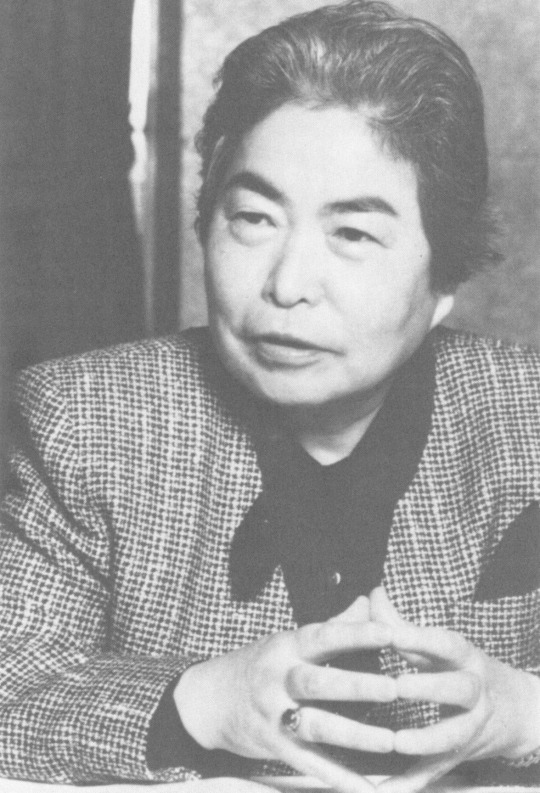
Nakane Chie was born in Tokyo, Japan in 1926 and spent her childhood in Beijing, China. This greatly influenced her interest in cultural comparisons since after returning to Japan she found herself noting the differences between Japanese and Chinese atmospheres and behaviors.
She has an incredibly robust list of institutions she attended, studied, and worked at.
Nakane first attended Tsuda College for undergrad as an anthropology major and graduated in 1947. She was interested in cross-cultural comparisons, and specifically focused on China and Tibet during her graduate research at the University of Tokyo in 1952.
Following her graduation she conducted fieldwork in Assam, India from 1953 through 1957. In the succeeding years she then moved to Europe to analyze her data and further her studies at the London School of Economics and with Dr. Giuseppe Tucci, a noted authority of TIbet at the time. [Of course this detail comes with my own personal opinion that there is a much larger conversation to be had about white western academic men being seen as experts on cultures that were largely still considered ‘other’]
Additionally, Nakane was a visiting lecturer at the University of Chicago from 1959-1960, and at the School of Oriental and African Studies at the University of London from 1960 to 1961. [The name of this institution college definitely seems a little problematic on several levels (IN MY OWN OPINION) due to the implication that it appears to have been created in order to study two broad, diverse, and dynamic cultural regions through a white elite western academic ideology, together??? ] Additionally, she was a professor at Osaka University, the National Museum of Ethnology, and a visiting professor at Cornell from 1975 to 1980.
In 1970, Nakane became the first female professor at the University of Tokyo, and from 1980 to 1982 she served as director of the Institute of Oriental Culture. She retired from the University of Tokyo in 1987. Then in 1995 she became the first female member of the Japan academy, an organization modeled after contemporary western academies that would bring together distinguished groups of academics and scientists. To this date Nakane, as far as I know, is the only woman to have been made a member of the academy. She was also made an honorary member of the Royal Anthropological Institute of Great Britain and Ireland (RAI).
Nakane’s most famous work is the 1970 book Japanese Society. Prior to being translated it originally was an essay published in 1967 and titled: Tate-shakai no ningen-kankei-Tanitsu-shakai no riron (Personal Relations in a Vertical Society - A Theory of Homogeneous Society). This book has now been translated into various languages including English, Mandarin, French, German, Spanish, Italian, and 7 others (I actually couldn’t figure out what those editions were but it was in fact 13 languages in total...absolutely wild!).
This seminal work discusses and strives to understand the structure of Japanese society through the framework of objective cross-cultural comparison, particularly with India. She bases her discussion and analysis on two criteria, the first being ‘attribute’ which is defined as something acquired at birth or earned through achievement. The second criterion is ‘frame’ which indicates a particular relationship or locality that binds individuals together. It happens to be an English translation of the Japanese ba, which means ‘location’. This is most definitely an oversimplification of the work as a whole, but the bottom-line is this was groundbreaking and transformative within Japanese anthropology and anthropology as a whole.
Nakane unquestionably furthered scholarship of the theory of societal structure within both Japanese and Western academia. She is incredibly celebrated and in 1990 was awarded the Purple Ribbon Medal of Honor which is given to those who have contributed to academic or artistic accomplishments and developments. She was also awarded the Order of Culture in 2001, which is given to those who have made significant contributions to culture such as science, art, and technology.
Her impact was monumental and she is truly still a pioneering woman in anthropology. Nakane is currently 94 years and Emerita of Social Anthropology at the University of Tokyo.
Refs:
Hendry, Joy. "An Interview with Chie Nakane." Current anthropology 30.5 (1989): 643-649.
Fukuoka Prize. 2021. NAKANE Chie. [online] Available at: <https://fukuoka-prize.org/en/laureates/detail/c243a9ea-bcd4-4d3b-b942-aee47edcd90b>.
En.wikipedia.org. 2021. Chie Nakane - Wikipedia. [online] Available at: <https://en.wikipedia.org/wiki/Chie_Nakane> [Accessed 1 June 2021].
Nakane, Chie. Japanese society. Vol. 74. Univ of California Press, 1970.
Prabook.com. 2021. Chie Nakane. [online] Available at: <https://prabook.com/web/chie.nakane/201999> [Accessed 1 June 2021].
---------------------------------------------------------------------------
About the podcast: The I Dig It Podcast was created by Alyssa and Michaela in March of 2020. Our goal for this podcast was to provide archaeology enthusiasts with insight into the student perspective of navigating the world of academia and the job market for archaeology and anthropology. Guests on the podcast include people from all different parts of their career, including highschool, undergrad, grad school, post doc, and early career!
Where to Find Us:
Insta: https://www.instagram.com/idigitpodcast/
Twitter: https://twitter.com/IDigItPodcast
Discord: https://discord.gg/T7BPe36
ArchPodNet: https://www.archaeologypodcastnetwork.com/idigit
How to get involved: Sign up to be a guest or to be featured on our social media pages ➡️ https://linktr.ee/idigitpodcast
#women in anthropology#anthropology#archaeology#science#women in science#social anthropology#cultural anthropology#japan#japanese society#cross-cultural studies#society#podcasts#archaeologypodcastnetwork#archpodcastnetwork#archaeologist#anthropologist#japanese anthropology#feminism#academics#women#research#education#scholarship#women in research
934 notes
·
View notes
Text
IMPORTANT PEOPLE IN ARCHAEOLOGY: GEORGE MCJUNKIN

Alright everyone, in honor of Juneteenth, I would like to tell you the story of Mr. George McJunkin, an African American Cowboy and archaeologist!
McJunkin was born into slavery on a ranch in Texas in 1851. His father worked on that same ranch as a blacksmith after he purchased his own freedom; and no sources online can seem to provide any information on his mother.
Growing up, McJunkin learned many skills as a ranch hand and he also frequently interacted with Mexican vaqueros (cowboys) who taught him how to handle horses.
On a night in 1867 he packed up some food, an extra pair of pants, took a mule from his master’s ranch, and set out to become a cowboy. McJunkin had many jobs as a horse and cattle wrangler as well as a manager of various ranches in both South and West Texas, Northeastern New Mexico, and in Northwestern Oklahoma.
It was during this time that he learned how to read and write from other cowboys; but he also picked up quite a bit on his own. He taught himself how to speak fluent Spanish, and how to play the fiddle. He was also very interested in science and history, and educated himself in archaeology.
In the early 1900s McJunkin was offered a job as the foreman on the Crowfoot Ranch near Folsom, New Mexico (yeah THAT Folsom, New Mexico my fellow Prehistoric North American archaeology nerds).
Then, on August 27th, 1908 Folsom was hit with a harsh and heavy rainstorm which ended up causing massive flooding. McJunkin and a friend Bill Gordon were surveying damage to fences along the Dry Cimarron River, and it was in the Wild Horse Arroyo that McJunkin noticed huge bones sitting in the newly exposed sediment.
McJunkin’s life experience allowed him to recognize these bones were not from any modern day cattle or buffalo species, and therefore were probably a significant archaeological discovery. He tried to get the scientific community interested in the site with no luck.
George McJunkin passed away in 1922 at the age of 71 without having known just how significant this discovery was going to be.*
While the realms of American anthropology and archaeology have made significant progress and improvements in the past 100 years (though they still have a long way to go), the disciplines during the early 1900s were inundated with racism and prejudice. Scientific authorities at the time were hard-set in their understanding that Indigenous prehistory only extended approximately 3,000 years B.P. (before the present). This relatively young date range helped to justify academic views at the time that Indigneous peoples were ‘savage’ and ‘uncivilized’, and therefore inferior white western culture.
Several months after McJunkin’s death in 1922 a team of amateur archaeologists ended up excavating the arroyo site and discovered more bones and associated projectile points (projectile point is the general term to refer to spear or arrow heads).
Then, in 1926 the director of the Colorado Museum of Natural History (now the Denver Museum of Nature and Science) J.D. Figgins was shown bones from the site and he proceeded with formal excavations in that same year.
The Folsom site is monumental for how it changed the way western academics understood North American prehistory. These excavations turned up approximately 30 individual skeletons from the extinct bison species Bison antiquus. This is a species that dates from 10,000 to 18,000 years ago.

In the following year, 1927, a skeleton was found with a spear point lodged in situ (in place/in context) between the bison’s ribs (what is known as a Folsom Point). This find meant that prehistoric people existed within the North American continent at least 11,000 years B.P.

Again, there is no way to overstate how significant this site is, and how frankly cool it is that a Black cowboy and former slave was the one to initially find it. Though, I would also like to note that The Denver Museum of Nature and Science does not mention George McJunkin and his association with the Folsom archaeology site that made them well-known; and if the information is present it is not easily accessible.
There are no doubt countless unsung brilliant anthropologists and archaeologists throughout American history, people who have made incredible contributions to these disciplines without ever knowing the true impact they would have.
George McJunkin is certainly one of these people, but as time goes on I am hopeful that his story and importance will be taught alongside all the big names in American anthropology, because his life is certainly one that deserves to be celebrated.
*Brief aside from the author: the word ‘discovery’ never really feels appropriate to me when discussing prehistoric Indigenous sites. I don’t know about anyone else, but to me the idea of ‘Discovering’ seems to imply that Indigenous people didn’t already know a site was there. I am sure many nations did/do know the location of important cultural sites but may not want to disturb them for various reasons. Anyway if you stuck through this mini-soapbox thank you, please continue on with your regularly scheduled reading.*
Refs
“George McJunkin and the Discovery That Changed American Archaeology.” Archaeology Southwest, 20 Oct. 2020, www.archaeologysouthwest.org/2015/02/23/george-mcjunkin-and-the-discovery-that-changed-american-archaeology/.
“George McJunkin: Standing at the Intersection of Black History and American Archaeology.” Archaeology Southwest, 5 Mar. 2021, www.archaeologysouthwest.org/2021/03/04/george-mcjunkin-standing-at-the-intersection-of-black-history-and-american-archaeology/.
Matt Doherty, Matt. “George McJunkin – Black Cowboy & History Changing Amateur Archaeologist.” Legends of America, www.legendsofamerica.com/george-mcjunkin/.
Peterson, Heather. “George McJunkin (1851-1922) •.” BlackPast, 25 Feb. 2020, www.blackpast.org/african-american-history/mcjunkin-george-1851-1922/.
---------------------------------------------------------------------------
About the podcast: The I Dig It Podcast was created by Alyssa and Michaela in March of 2020. Our goal for this podcast was to provide archaeology enthusiasts with insight into the student perspective of navigating the world of academia and the job market for archaeology and anthropology. Guests on the podcast include people from all different parts of their career, including highschool, undergrad, grad school, post doc, and early career!
Where to Find Us:
Insta: https://www.instagram.com/idigitpodcast/
Twitter: https://twitter.com/IDigItPodcast
Discord: https://discord.gg/T7BPe36
ArchPodNet: https://www.archaeologypodcastnetwork.com/idigit
How to get involved: Sign up to be a guest or to be featured on our social media pages ➡️ https://linktr.ee/idigitpodcast
#archaeology#anthropology#juneteenth#african america history#american history#prehistoric#prehistory#anthropologist#archaeologist#research#education#black history#cowboy history#vaqueros#archpodcastnetwork#archaeology podcast network#history#folsom#new mexico#spear heads#lithics#projectile point#bison#extinct species#cool history
131 notes
·
View notes
Text
Women in Anthropology: BERTHA “BIRDIE” PARKER CODY
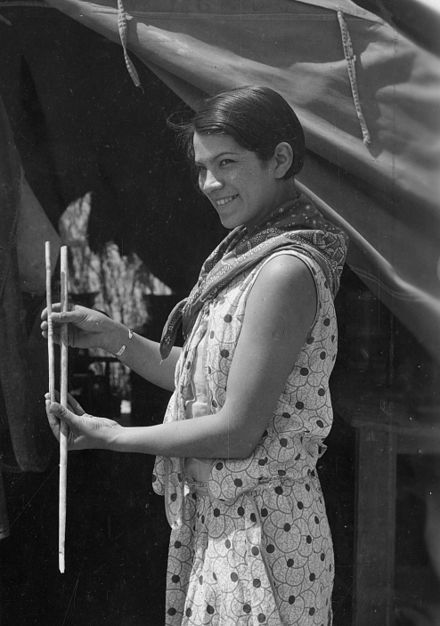
Bertha Parker Cody, born Bertha Yewas Parker, lived an incredibly nuanced life as an Indigenous women working in anthropology and archaeology during the early to mid 20th century.
*Her family history is (ngl) wild to say the least*
She was born in 1907 in New York to Beulah Tahamont (later Folsom) and Arthur C. Parker. Her mother was an actress that came from a family of actors. Her maternal grandmother was Margaret Dove Eye Camp and her grandfather was famous silent film actor and leader of the First Nations Abenaki tribe, Elijah Dark Cloud Tahamont.
Her father was of Seneca and Scottish-English descent, was educated as an archaeologist, and became the first president of the Society for American Archaeology (SAA).
*Now we don’t have time to unpack ALL of that so stay tuned for a future post on the life of Arthur C. Parker*
Birdie was married three times. After her first unhappy marriage to Joseph Pallan ended, she married paleontologist James E. Thurston who passed away in 1931. Then in 1936 she married actor Espera Oscar de Corti who was better known as an actor going by the name of “Iron Eyes Cody”.
*Now we REALLY don’t have time to unpack all of that so stay tuned for a future post on appropriation vs. appreciation and Indigenous visibility*
Her uncle was Mark Raymond Harrington, a curator of archaeology at the Southwest Museum in Los Angeles (now the Autry Museum of the American West) from 1931 to 1964. He hired Birdie as the camp cook, expedition secretary, and assistant archaeologist.
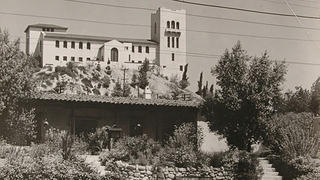
She assisted on various archaeological sites including Mesa house as well as the famous Gypsum Cave in Nevada. The site’s earliest human habitation was approximately 3000 BCE, and it was also at one point occupied by the now extinct Shasta ground sloth (Nothrotheriops shastensis) up until 11,000 BCE. Birdie was responsible for discovering a ground sloth skull and human tools in the cave’s room 3.
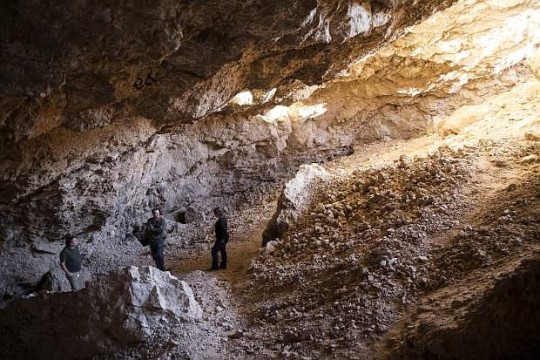
During the Gypsum Cave excavations, she also found the site of Corn Creek near Las Vegas, Nevada which contained the remains of the extinct North American camel species (Camelops hesternus). This site dates to approximately 5000 BCE.
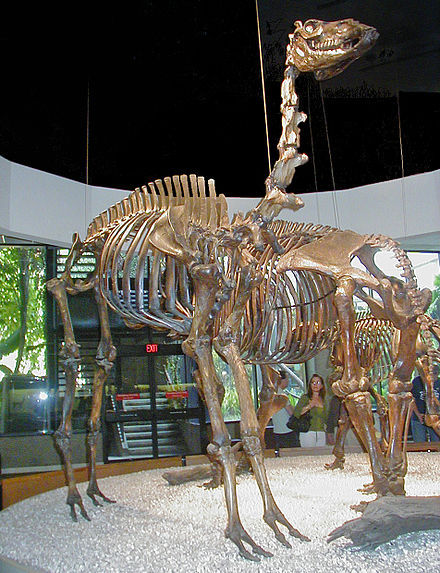
Birdie additionally worked as an archaeological assistant in the Southwest Museum and published her own anthropological and ethnographic work on Indigenous groups in California. These works included: “Some Yurok Customs and Beliefs” and "A Maidu myth of the first death; by Bertha Parker Cody, as related by Mandy Wilson of Chico, California”.
This kind of work by an Indigenous female archaeologist was incredibly important, especially in the early 20th century. Archaeology was quickly becoming a well-respected subject within academia and research. However, It was also almost completely dominated by white men who regarded themselves as the sole intellectual authorities within the field. Many tend to forget that elite academic knowldge is not a universal truth and not the only correct way of understanding the world.
Birdie was not educated in a formal academic institution, but this does not make her any less an incredible researcher, scholar, and archaeologist.
Her life is honestly a bit unfathomable to an onlooker from the 21st century, but her story is definitely an important one to know. She was a brilliant Indigenous woman and scientist at the center of American archaeology and anthropology.
Bridie died in 1978, and over 40 years later the Society for American Archaeology, with support from the Autry Museum of the American West, has announced the Bertha Parker Cody Award for Native American Women. Long overdue and a tad bit ironic given recent SAA news (Link to post: https://idigitpodcast.tumblr.com/post/649946268870819840/check-out-some-recent-news-in-archaeology-and) but wonderful nonetheless.
It is imperative in this current moment, especially in the United States, that archaeology is accessible to Indigenous viewpoints; and the field frankly needs more minds and perspectives like Bertha Parker Cody.
Refs:
“New Award Honors Bertha Parker Cody, First U.S. Native American Woman Archaeologist.” Society for American Archaeology, www.saa.org/quick-nav/saa-media-room/saa-news/2020/11/16/bertha-parker-cody-award.
“Bertha Parker Pallan.” Wikipedia, Wikimedia Foundation, 5 Apr. 2021, en.wikipedia.org/wiki/Bertha_Parker_Pallan.
“What Is the Autry?” Autry Museum of the American West, 11 Nov. 2020, theautry.org/about-us.
Bruchac, Margaret. "First Female Native Archaeologist." (2005).
Bruchac, Margaret M.. Savage Kin: Indigenous Informants and American Anthropologists. United States, University of Arizona Press, 2018.
“Bertha Parker Pallan Cody (1907-1978).” Smithsonian Institution, www.si.edu/es/object/bertha-parker-pallan-cody-1907-1978:siris_arc_306365.
“Bertha ‘Birdie’ Parker: TrowelBlazers.” TrowelBlazers Bertha BirdieParker Comments, trowelblazers.com/bertha-birdie-parker-also-known-as/.
---------------------------------------------------------------------------
About the podcast: The I Dig It Podcast was created by Alyssa and Michaela in March of 2020. Our goal for this podcast was to provide archaeology enthusiasts with insight into the student perspective of navigating the world of academia and the job market for archaeology and anthropology. Guests on the podcast include people from all different parts of their career, including highschool, undergrad, grad school, post doc, and early career!
Where to Find Us:
Insta: https://www.instagram.com/idigitpodcast/
Twitter: https://twitter.com/IDigItPodcast
Discord: https://discord.gg/T7BPe36
ArchPodNet: https://www.archaeologypodcastnetwork.com/idigit
How to get involved: Sign up to be a guest or to be featured on our social media pages ➡️ https://linktr.ee/idigitpodcast
#women in archaeology#women in science#women in anthropology#archaeology#science#history#cultural anthropology#ethnography#american archaeology#i dig it#podcast#archpodcastnetwork#ground sloth#extinct animals#gypsum cave#saa#indigenous#southwest archaeology#research#academia aesthetic#academia#native american#education#megafauna#extinct species#cultural resources#american west#anthropologie#anthropologist#archaeologist
115 notes
·
View notes